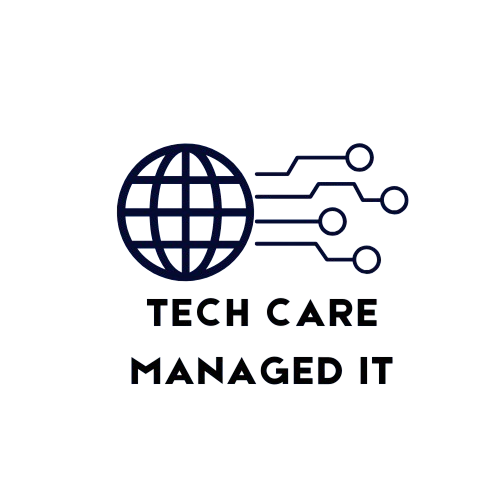Understanding Admissions Appointment Setting
Admissions appointment setting is a structured approach to scheduling and managing meetings between prospective students and school representatives. Unlike general appointment scheduling, this process focuses specifically on guiding students through the admissions journey, ensuring that their questions are answered and their enrollment process is smooth. Educational institutions, from private schools to colleges and universities, rely on effective admissions appointment setting to create personalized experiences that help prospects feel valued. By scheduling appointments strategically, admissions teams can prioritize high-potential students and provide focused attention where it matters most. This process also ensures that staff time is used efficiently, minimizing missed opportunities for enrollment. Proper appointment setting allows institutions to maintain clear communication, track interactions, and follow up promptly. Ultimately, it transforms the often overwhelming admissions process into a well-organized, professional experience for students and parents alike.
Key Components of Effective Admissions Appointment Setting
Effective admissions appointment setting starts with identifying the right prospects. Admissions teams need to understand which students are most likely to enroll based on their academic interests, location, and readiness. Tools like CRM systems, calendar integrations, and automated reminder software are essential for keeping appointments organized and reducing the chance of missed meetings. Communication channels, such as phone calls, emails, text messages, and video conferencing, help maintain contact and offer flexibility for students. Accurate record-keeping ensures that every interaction is tracked, making it easier to follow up and personalize future communication. Coordination with the admissions team is critical so that appointments align with staff availability. Additionally, having a clear protocol for cancellations and rescheduling prevents scheduling conflicts and keeps the process seamless. Each of these components works together to create an organized, responsive, and professional approach to connecting with prospective students.
Best Practices for Admissions Appointment Setting
Personalization is key to successful admissions appointment setting. Addressing prospects by name and tailoring communication to their specific interests demonstrates attentiveness and care. Timing also plays a crucial role, as outreach should coincide with peak enrollment periods or relevant academic milestones. Consistent and professional follow-ups ensure that prospects remain engaged without feeling pressured. Handling cancellations or rescheduling requests promptly helps maintain trust and prevents missed opportunities. Clear coordination with the admissions team avoids overbooking and ensures every appointment receives proper attention. Tracking interactions in a CRM system can reveal trends and highlight areas for improvement. Implementing these best practices allows institutions to build meaningful connections with prospective students and improve enrollment outcomes.
Common Challenges in Admissions Appointment Setting and How to Overcome Them
One of the biggest challenges in admissions appointment setting is no-shows, which can waste staff time and affect enrollment numbers. Reducing missed appointments often requires timely reminders and flexible scheduling options. Reaching prospects can also be difficult due to changing contact information or busy schedules, making multi-channel communication essential. Overbooking or conflicting appointments can occur without proper tracking, highlighting the importance of integrated scheduling software. Aligning appointment setting with other admissions processes, such as document collection and application reviews, ensures that students move smoothly through the enrollment pipeline. Training admissions staff on consistent communication techniques and professional etiquette helps overcome resistance from hesitant or unresponsive prospects. Anticipating these challenges and implementing proactive solutions strengthens the overall efficiency of the admissions process.
Benefits of a Streamlined Admissions Appointment Setting Process
Streamlined admissions appointment setting leads to increased enrollment by ensuring that every prospect receives timely attention. Prospective students experience a smoother, more personalized admissions process, which enhances satisfaction and engagement. Administrative workload is reduced as automated tools handle reminders, scheduling, and follow-ups, freeing staff to focus on meaningful interactions. Clear records and data tracking allow admissions teams to monitor performance, identify trends, and adjust strategies in real-time. Institutions also benefit from improved reputation and credibility, as prospects perceive the organization as organized and professional. Timely appointments prevent delays in the application process and create a sense of reliability and responsiveness. Overall, an effective appointment-setting process aligns staff efforts with institutional goals and enhances the overall admissions experience for every prospect.
Technology and Automation in Admissions Appointment Setting
Modern admissions appointment setting relies heavily on technology to streamline scheduling and communication. CRM systems allow teams to track every interaction and manage prospects efficiently. Automated reminders via email or SMS reduce no-shows and keep students engaged. Scheduling software can integrate with calendars and admissions portals, making it easy to coordinate appointments across multiple staff members. Some platforms even allow students to book or reschedule appointments online, creating a convenient and flexible experience. Analytics and reporting tools provide valuable insights into appointment trends, staff performance, and conversion rates. Leveraging technology in this way ensures that admissions teams operate at maximum efficiency while maintaining a personal and professional approach to every student interaction.
Measuring the Success of Admissions Appointment Setting
To evaluate the effectiveness of admissions appointment setting, institutions should track key performance indicators (KPIs) such as appointment attendance rates, conversion rates from meetings to enrollment, and communication response times. Monitoring the quality of interactions helps ensure that appointments provide meaningful guidance to students. Feedback from prospective students and parents can highlight areas for improvement in scheduling, communication style, or staff performance. Tracking no-show rates and follow-up success allows teams to refine their strategies and implement targeted improvements. Comparing appointment data across different recruitment periods or campaigns can reveal patterns and inform future outreach strategies. Ultimately, measuring success provides actionable insights that help admissions teams enhance efficiency and increase enrollment outcomes.
Frequently Asked Questions (FAQ)
What is admissions appointment setting, and why is it important?
Admissions appointment setting is the structured process of scheduling meetings between prospective students and school representatives. It is important because it ensures organized communication, reduces missed opportunities, and improves enrollment efficiency.
How can schools reduce no-shows for appointments?
Schools can reduce no-shows by sending timely reminders, offering flexible scheduling options, and following up with students via multiple communication channels.
What tools are best for managing admissions appointments?
CRM systems, calendar integrations, automated reminder software, and online booking platforms are highly effective tools for managing appointments.
How often should follow-ups be scheduled after the initial appointment?
Follow-ups should be scheduled based on the student’s stage in the admissions process, generally within a few days of the initial appointment and as needed until enrollment decisions are finalized.
Can appointment setting be automated without losing a personal touch?
Yes, automation can handle scheduling, reminders, and follow-ups while allowing staff to focus on personal interactions, ensuring a balance between efficiency and engagement.











